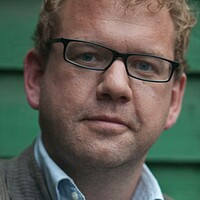Britain's shadowy 'White Widow' linked to SEAL team target in Somalia
Loading...
| Mombasa, Kenya
Britain’s fugitive “White Widow,” Samantha Lewthwaite, has emerged as part of the same terror cell planning attacks in Kenya, also connected to the man that US Navy SEALs tried to capture in an amphibious raid in Somalia days ago.
US officials Monday named Abdulkadir Mohamed Abdulkadir “Ikrima” as the “high value target” Seal Team Six was hunting. He escaped unharmed as the commandos retreated under heavy fire to avoid civilian casualties.
Reports by Kenya’s National Intelligence Service, seen by The Christian Science Monitor, say Ikrima, who is Kenyan, was “coordinator” of a cell including Ms. Lewthwaite and another Briton, Jermaine Grant, that planned “multiple attacks” on targets in Nairobi in late 2011 and early 2012.
Saturday’s predawn raid was designed to capture Ikrima with a view to interrogating him about the growing international reach of Al Shabab, Somalia’s Al Qaeda proxy, one US official said.
Lewthwaite, the daughter of a British soldier, converted to Islam as a teenager. She was dubbed the "White Widow" by media after her husband, Germaine Lindsay, died in London as one of the four suicide bombers who attacked the city transport network on July 7, 2005. The bombing killed 52 and brought the world's cultural and financial hub to a standstill for days in the first attack of its kind in London.
Mr. Lindsay's widow told the press she abhorred her husband's actions but was then later tied to terror activity in East Africa. Last month, Interpol issued a "red notice" for her arrest.
Kenyan police have wanted to arrest Lewthwaite, who is alleged to be in Somalia and linked to Al Shabab.
Al Shabab has claimed responsibility for the assault on the Nairobi mall in which at least 67 people were killed. But despite initial unsubstantiated and occasionally lurid reports of Lewthwaite's presence at the Westgate mall, there is as yet no clear link between the Ikrima Al Shabab cell and the recent Westgate siege.
In 2011, Lewthwaite, Ikrima, and four others were in the latter stages of planning attacks in Kenya that were “sanctioned by al-Qaeda core in Pakistan,” the NIS documents say. Ikrima was the cell’s leader.
Their targets included “parliament buildings, the UN Office in Nairobi, Kenya Defense Force camps, an Ethiopian restaurant in Nairobi,” and the “assassination of top Kenyan political and security officials,” they say.
By December 2011, the planners of the Ikrima cell had acquired safe houses in Nairobi and Mombasa, trained the executors, received explosives from Somalia and commenced assembly of and concealment of explosives,” the report adds.
US officials said Monday that Ikrima was the target of the predawn amphibious assault that focused on his beachside villa in the Somali town of Barawe early on Saturday.
He was not in his house and is understood to have escaped unharmed. A Sudanese man and a joint Swedish-Somali national, foreigners fighting with Al Shabab, were reportedly killed.
The mission was aborted when commandos came under heavy fire from the safe house.
Ikrima has separately been named as Al Qaeda’s chief in East Africa who was responsible for planning attacks on a UN compound in Mogadishu and the airport in the city.
Kenyan prosecutors charged Lewthwaite with possessing bombmaking chemicals similar to those her former husband used in the Kings Cross Tube attack in 2005, and of planning to cause explosions.
She has been on the run in Somalia with her four children since December 2011, when police interviewed her at the house of a known Al Qaeda operative in Mombasa on Kenya’s coast, but failed to realize who she was. She fled hours after officers spoke to her.
Ikrima is a relative of Musa Dheere, the operative who was killed at a Mogadishu roadblock alongside Fazul Mohamed, the suspected mastermind of the 1998 US embassy bombings in Nairobi and Dar es Salaam, Tanzania.








